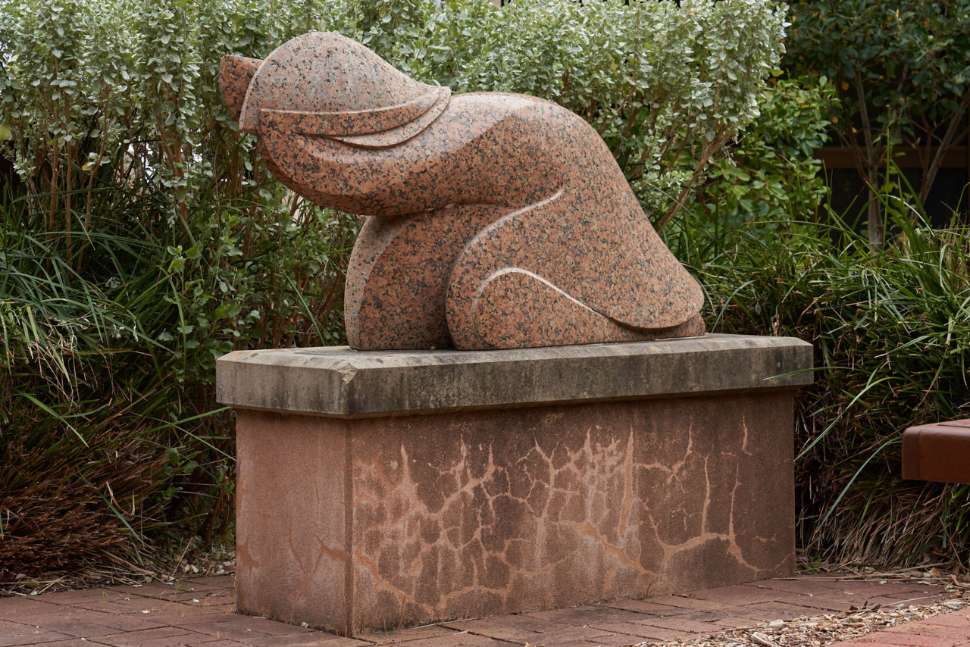In each piece of rock I pick up, I see, a potential picture straight away…the inspiration lies in the form of carving itself and not so much in its representational element… My work implies movement, and I invite the viewer to touch and follow the lines of my sculptures.[1]
Silvio Apponyi’s Woman Washing Her Hair (1989) was inspired by his visit to the Australian Dance Theatre in Tarntanya/Adelaide in the mid-1980s, where he observed dancers in rehearsal, capturing their movements through a series of wax studies. Captivated by the fluidity and expressiveness of the human form in motion, Apponyi translated these observations into a series of wooden carvings, refining the gestures and rhythms of the body. This process ultimately culminated in Woman Washing Her Hair, a granite sculpture that distils movement into a simplified yet dynamic abstract form. The work’s flowing lines and sinuous contours are characteristic of Apponyi’s early sculptural language, demonstrating his interest in reducing the human figure to its essential curves and rhythms. This approach reflects the influence of modernist Romanian sculptor Constantin Brâncuși (1876–1957), whose work similarly sought to capture the essence of form through smooth, organic shapes and a refined sense of balance. By abstracting the human figure, Apponyi emphasises the sculptural qualities of movement and transformation, creating a work that resonates with both classical and contemporary influences.
[1] Amzad H. Mian, Sculpture of the outdoors: an exhibition of sculptures by Silvio Apponyi (Flinders University Art Museum, 1990), 4–5.

